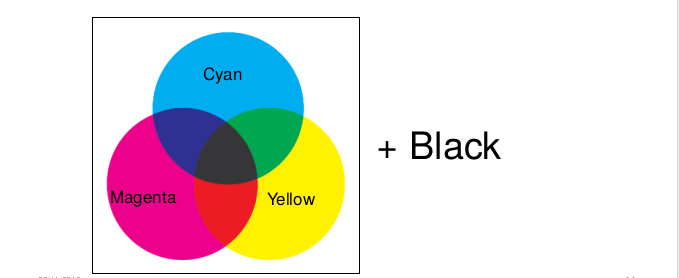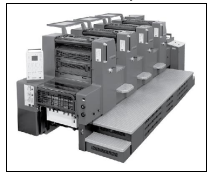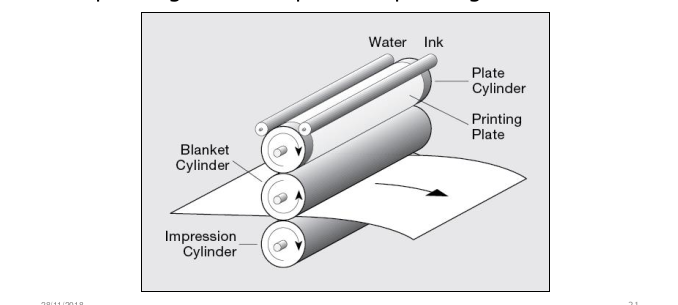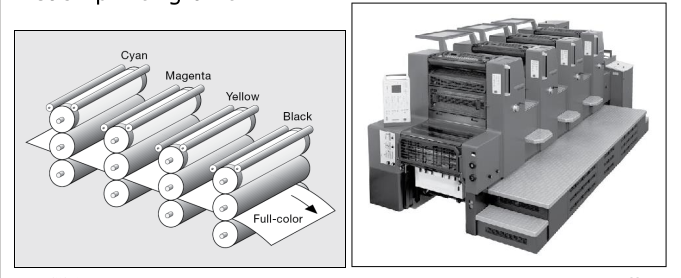CARTOGRAPHY AND VISUALIZATION II
Lesson 11
By Mwaura Joshua | @openmapsCo on Twitter
Lesson 11: Map reproduction
Map Reproduction
- This refers to printing of a map, or the electronic duplication of a map
- Print reproduction refers to the physical printing of a map using inks on paper
- Electronic reproduction refers to the duplication of a map in digital form
Map Reproduction | Planning
- 1. Determine the number of maps to be reproduced
- Reproduction consideration; Printing methods to be used
- 2. Select a scale and map projection that is appropriate for the map’s theme
- This forms the foundation of your map
- Questions to be answered at this stage
- Who’s the intended audience, & what’s purpose of the map?
- What is your budget?
- When is your deadline?
- What material will be used?
- Will it be printed in full color or gray tones?
Map Reproduction | Editing
- The critical evaluation and correction of every aspect of a map
- This begins the first time the cartographer views the map in its early stages, and culminates just before printing
- Questions that should be addressed when editing
- Map design; Does the design appropriately serve the map user? Does it communicate effectively?
- Completeness; Are any features, map elements, or type labels missing?
- Accuracy; Are features, map elements, and type labels correctly placed? Are words and numbers correct?
Map Reproduction | Editing
- Cartographers who edit their own maps face over-familiarity and fatigue, thus, you need
- Have a separate individual edit the map
- Edit with fresh eyes, at the beginning of a work session
- Edit large maps in sections
- View maps upside-down or sideways
- Edit after several days of separation from a map
- Read out loud
Print Reproduction | Screening
- Screening is a technique that makes colors appear lighter
- It involves reducing the amount of ink or toner applied to the print medium
- its used to create tints of a base color, and to represent continuous tone surfaces
- Two categories of screening
- Halftone
- Stochastic
Print Reproduction | Screening: Halftone
- Used in most print reproduction methods with the exception of ink-jet printing
- Ink or toner is applied in a pattern of equally spaced dots of variable size
- Used for pop art movement...

Print Reproduction | Screening: Stochastic
- Used primarily with ink-jet printing
- Ink or toner is applied in a pattern of very small, non-randomly spaced dots of uniform size

Print Reproduction | Aspects of Color Printing
- Process colors
- CMYK (subtractive primaries + black)
- Mixed on the page by applying them, in sequence, to the same area

Print Reproduction | Aspects of Color Printing
- Spot colors
- Opaque inks that are premixed before they reach the printing device
- Tints can be created through screening
- Exact color matches are easier to achieve because they do not rely on the printing device for mixing

Print Reproduction | High Volume Print Reproduction
- When large numbers of maps are required, issues of cost and time become critical
- Methods for low-volume print reproduction such as laser and ink-jet printing become too costly or time-consuming
- High-volume reproduction is dominated by a single method:- Offset Lithography
Offset Lithography
- Lithography is a printing process in which ink sticks only to certain areas of a surface
- Virtually all mass-produced maps are the result of offset lithography
- Characterized by excellent print quality and high printing speed
- Provides a significant decrease in the cost per unit as the number of copies increases

Offset Lithography Process
- 1. Pre-press phase
- Consists of various technologies and procedures
- Printing plates and Proofs are produced
- 2. Printing plate
- A sheet of aluminium that is mounted on a roller on an offset press, receives a positive, latent (invisible) image that ink sticks to, one for each color
Offset Lithography Process
- Traditionally created from film negatives, are now replaced by Computer-To-Plate (CTP) technology

Offset Lithography Process
- Proof
- A representation of what the final, reproduced map will look like
- An essential component of the prepress phase, allows editing to ensure that your map will be reproduced just as you intend
- Various levels of quality/cost

High Volume Print Reproduction
- File formats for pre-press
- A digital map can be delivered to the printing house in a variety of formats
- In the native format of the application software that created it (.MXD, .AI)
- In a page description language (Postscript)
- In a portable document format (EPS, PDF)
Offset Lithographic Printing
- The offset press has one or more printing units that transfer ink to the print medium
- Each printing unit is capable of printing one base color

Offset Lithographic Printing
- The image is transferred from the printing plate to the blanket cylinder, which then transfers the image onto the print medium

Offset Lithographic Printing
- Multi-color print jobs employ multiple printing units, one for each base color
- The print medium receives a different color ink from each printing unit

--End of Lecture 11 --
Cartography & Visualization II
That’s it!
Queries about this lesson, please send them to:
***References***
- Mapping, Society, and Technology, Steven Manson
- Web Cartography, Map Design for Interactive and Mobile Devices, Ian Muehlenhaus
- Web Cartography, Menno-Jan Kraak and Allan Brown, ITC
- Cartography, Thematic Map Design, Borden D. Dent
- GIS Cartography, A Guide to Effective Map Design, Gretchen N. Peterson
- Thematic Cartography and Geovisualization, Terry A. Slocum et.al
Courtesy of reveal.js